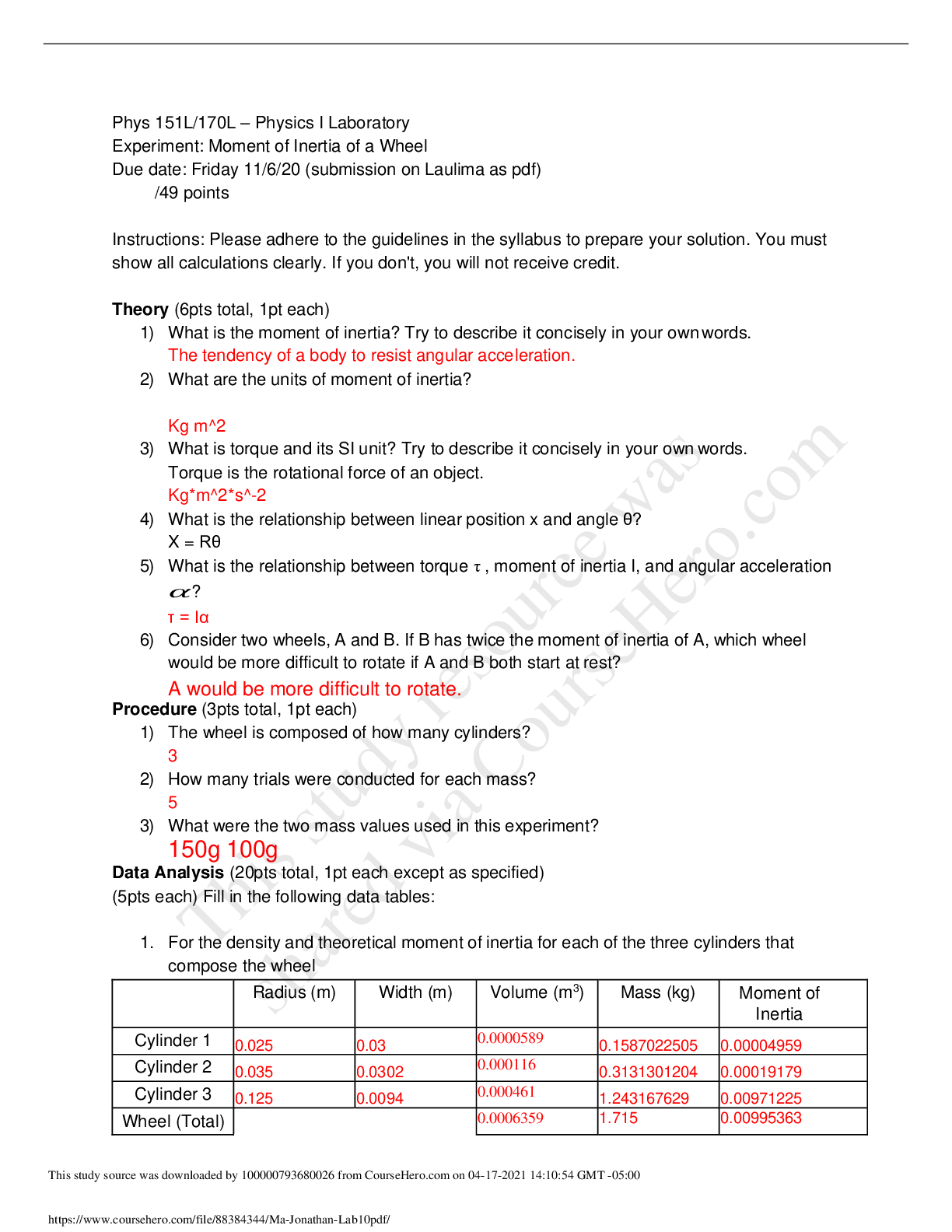Programming > QUESTIONS & ANSWERS > Troy University - BUS 2008Multiple choice - chapter 7 (All)
Troy University - BUS 2008Multiple choice - chapter 7
Document Content and Description Below
Chapter 2—An Introduction to Linear Programming MULTIPLE CHOICE 1. The maximization or minimization of a quantity is the a. goal of management science. b. decision for decision analysis. c. con... straint of operations research. d. objective of linear programming. ANS: D PTS: 1 TOP: Introduction 2. Decision variables a. tell how much or how many of something to produce, invest, purchase, hire, etc. b. represent the values of the constraints. c. measure the objective function. d. must exist for each constraint. ANS: A PTS: 1 TOP: Objective function 3. Which of the following is a valid objective function for a linear programming problem? a. Max 5xy b. Min 4x + 3y + (2/3)z c. Max 5x2 + 6y2 d. Min (x1 + x2)/x3 ANS: B PTS: 1 TOP: Objective function 4. Which of the following statements is NOT true? a. A feasible solution satisfies all constraints. b. An optimal solution satisfies all constraints. c. An infeasible solution violates all constraints. d. A feasible solution point does not have to lie on the boundary of the feasible region. ANS: C PTS: 1 TOP: Graphical solution 5. A solution that satisfies all the constraints of a linear programming problem except the nonnegativity constraints is called a. optimal. b. feasible. c. infeasible. d. semi-feasible. ANS: C PTS: 1 TOP: Graphical solution 6. Slack a. is the difference between the left and right sides of a constraint. b. is the amount by which the left side of a constraint is smaller than the right side. c. is the amount by which the left side of a constraint is larger than the right side. d. exists for each variable in a linear programming problem. ANS: B PTS: 1 TOP: Slack variables 7. To find the optimal solution to a linear programming problem using the graphical method a. find the feasible point that is the farthest away from the origin. b. find the feasible point that is at the highest location. c. find the feasible point that is closest to the origin. d. None of the alternatives is correct. ANS: D PTS: 1 TOP: Extreme points 8. Which of the following special cases does not require reformulation of the problem in order to obtain a solution? a. alternate optimality b. infeasibility c. unboundedness d. each case requires a reformulation. ANS: A PTS: 1 TOP: Special cases 9. The improvement in the value of the objective function per unit increase in a right-hand side is the a. sensitivity value. b. dual price. c. constraint coefficient. d. slack value. ANS: B PTS: 1 TOP: Right-hand sides 10. As long as the slope of the objective function stays between the slopes of the binding constraints a. the value of the objective function won't change. b. there will be alternative optimal solutions. c. the values of the dual variables won't change. d. there will be no slack in the solution. ANS: C PTS: 1 TOP: Objective function 11. Infeasibility means that the number of solutions to the linear programming models that satisfies all constraints is a. at least 1. b. 0. c. an infinite number. d. at least 2. ANS: B PTS: 1 TOP: Alternate optimal solutions 12. A constraint that does not affect the feasible region is a a. non-negativity constraint. b. redundant constraint. c. standard constraint. d. slack constraint. ANS: B PTS: 1 TOP: Feasible regions 13. Whenever all the constraints in a linear program are expressed as equalities, the linear program is said to be written in a. standard form. b. bounded form. c. feasible form. d. alternative form [Show More]
Last updated: 2 years ago
Preview 1 out of 20 pages
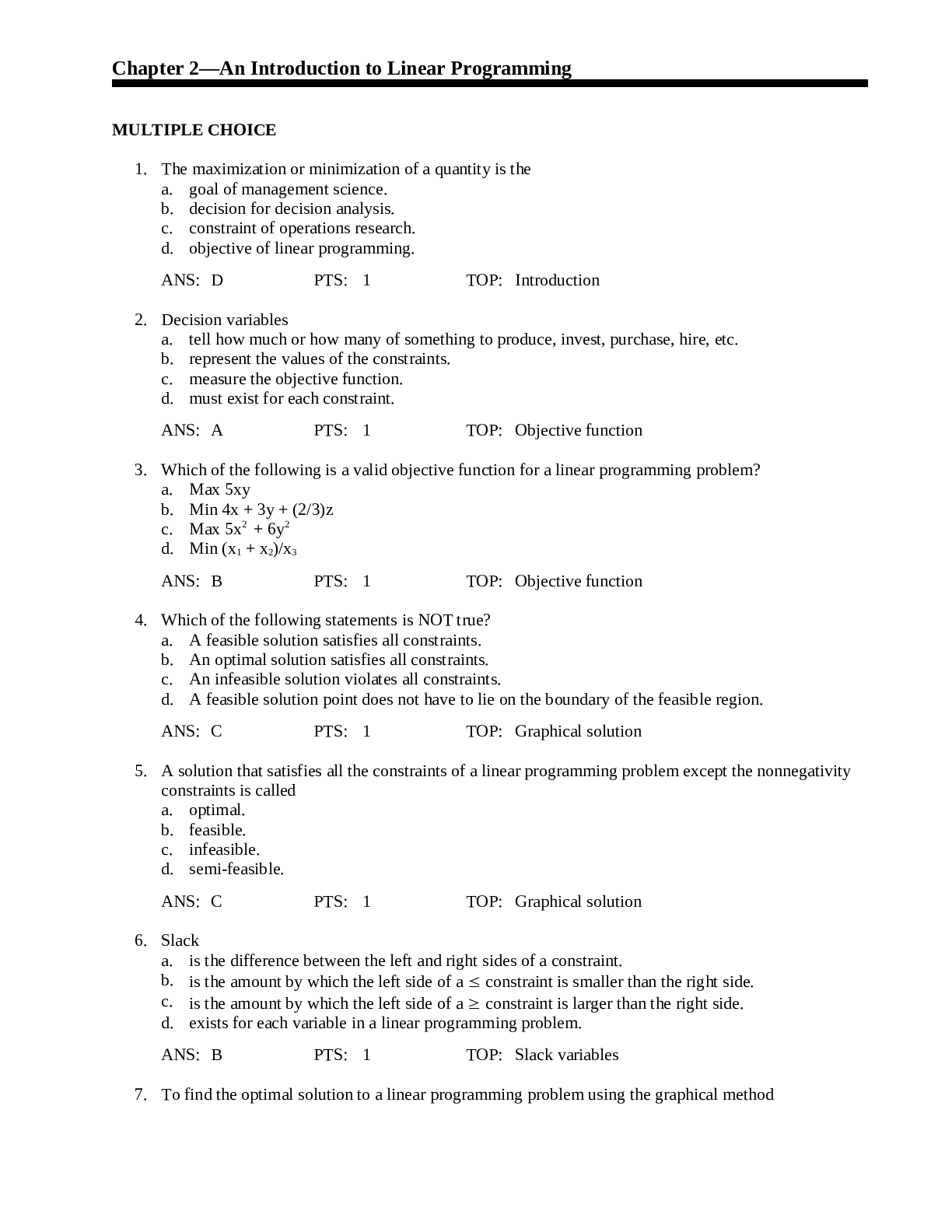
Buy this document to get the full access instantly
Instant Download Access after purchase
Buy NowInstant download
We Accept:

Reviews( 0 )
$7.00
Can't find what you want? Try our AI powered Search
Document information
Connected school, study & course
About the document
Uploaded On
Apr 03, 2021
Number of pages
20
Written in
Additional information
This document has been written for:
Uploaded
Apr 03, 2021
Downloads
0
Views
80


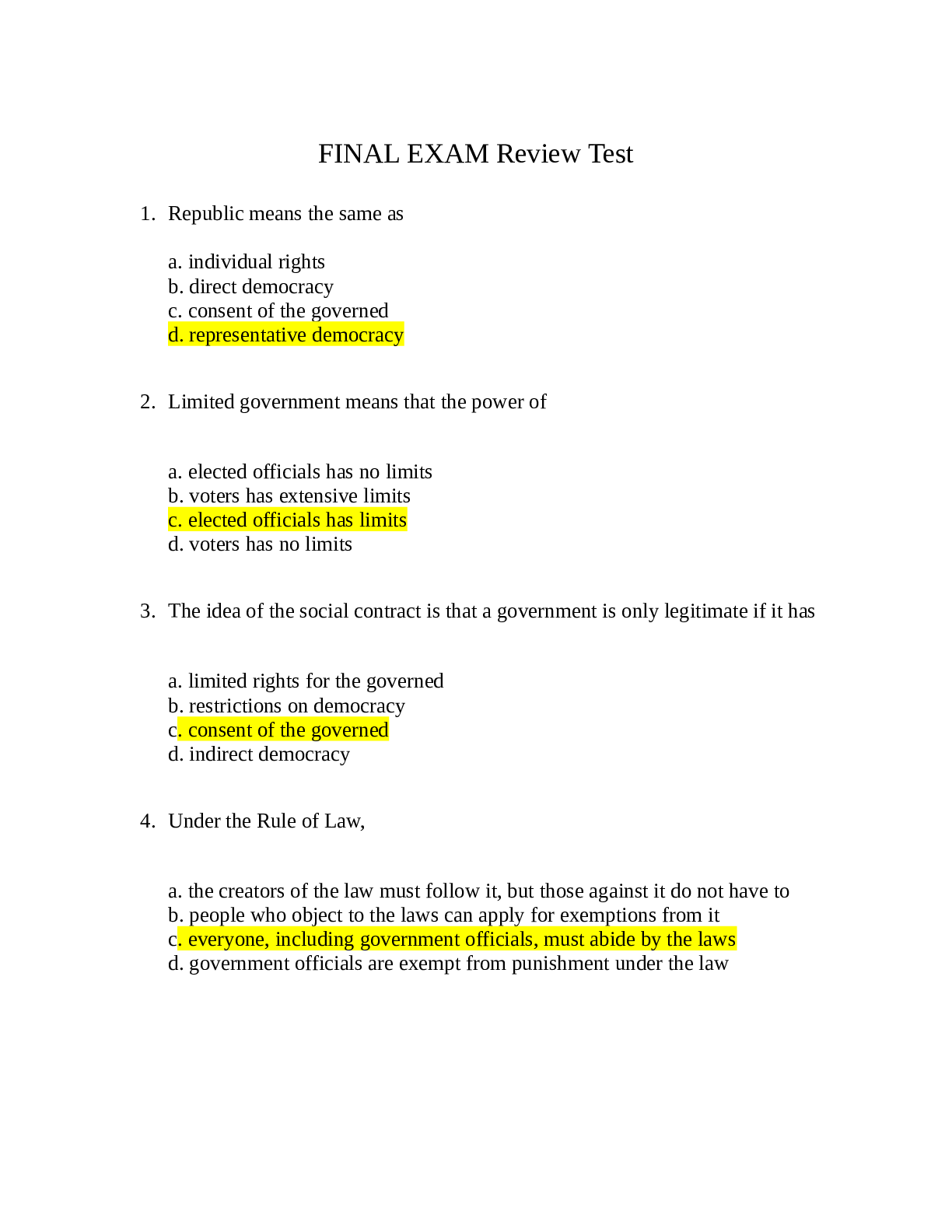
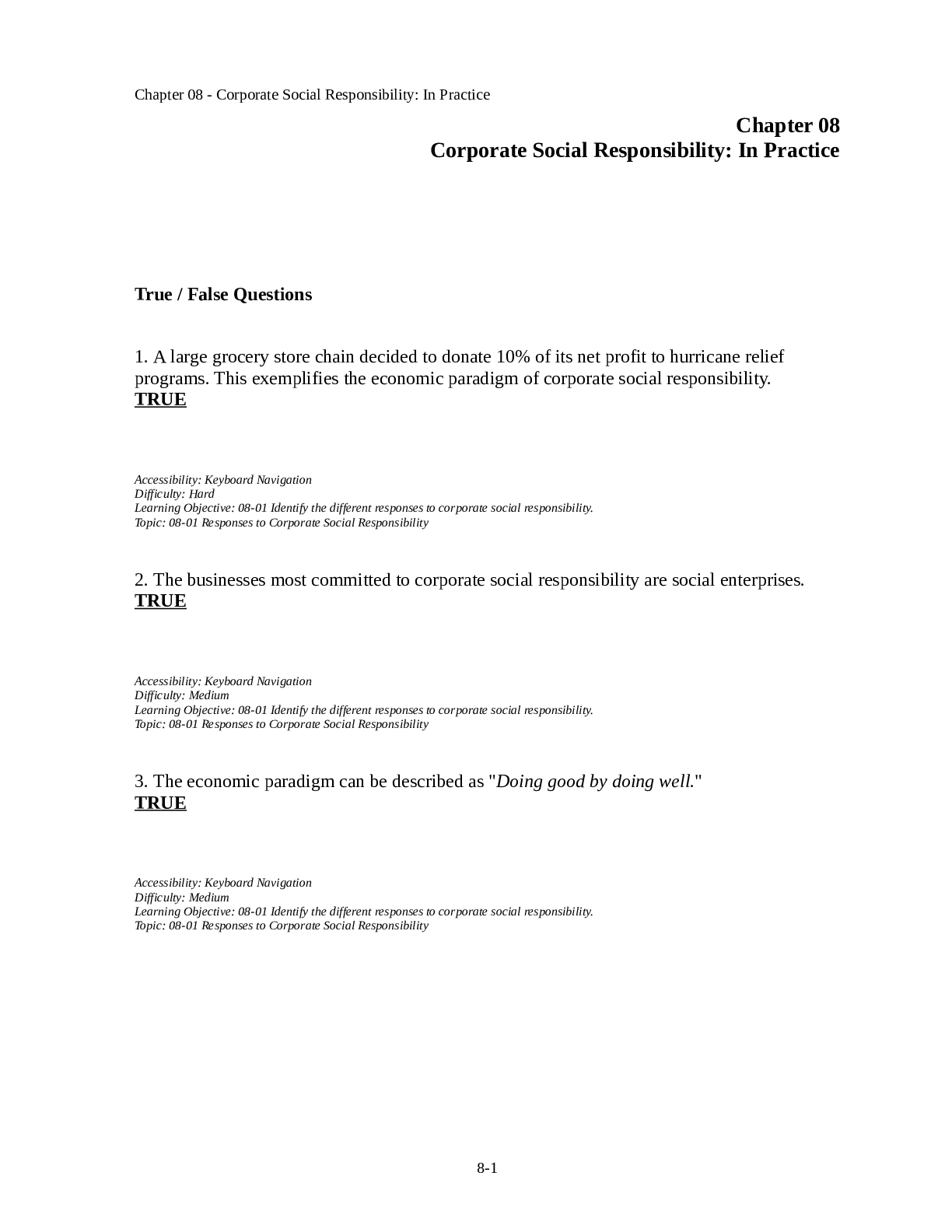
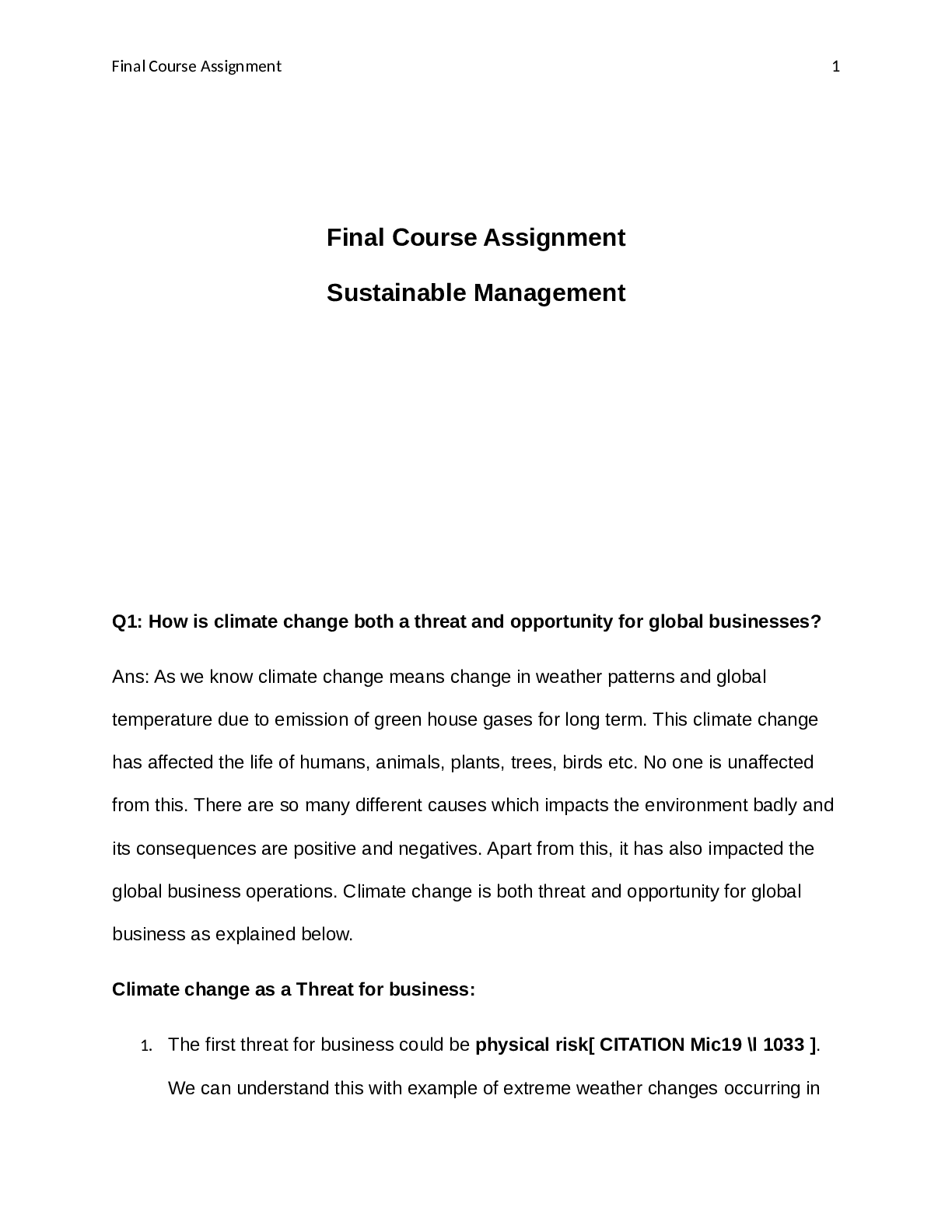
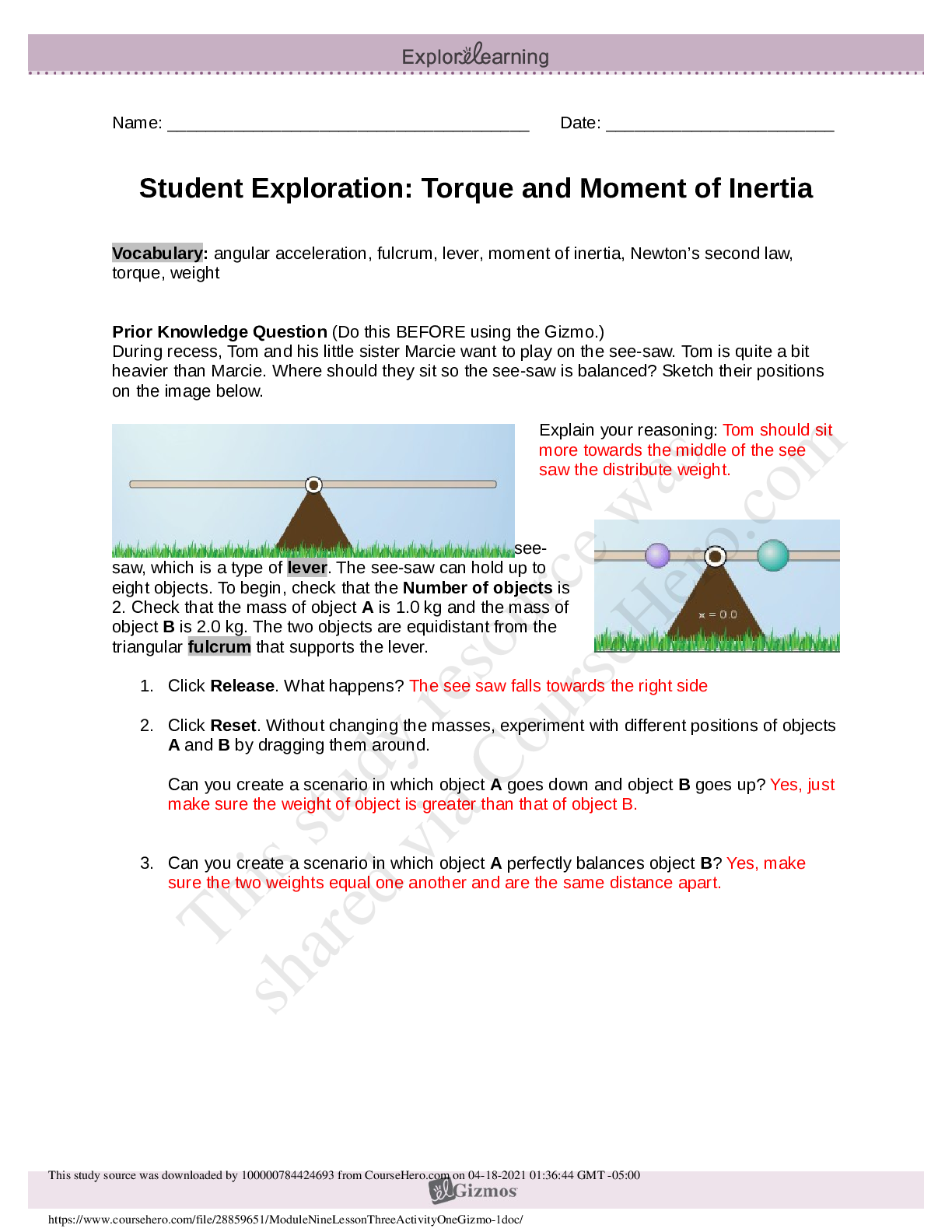


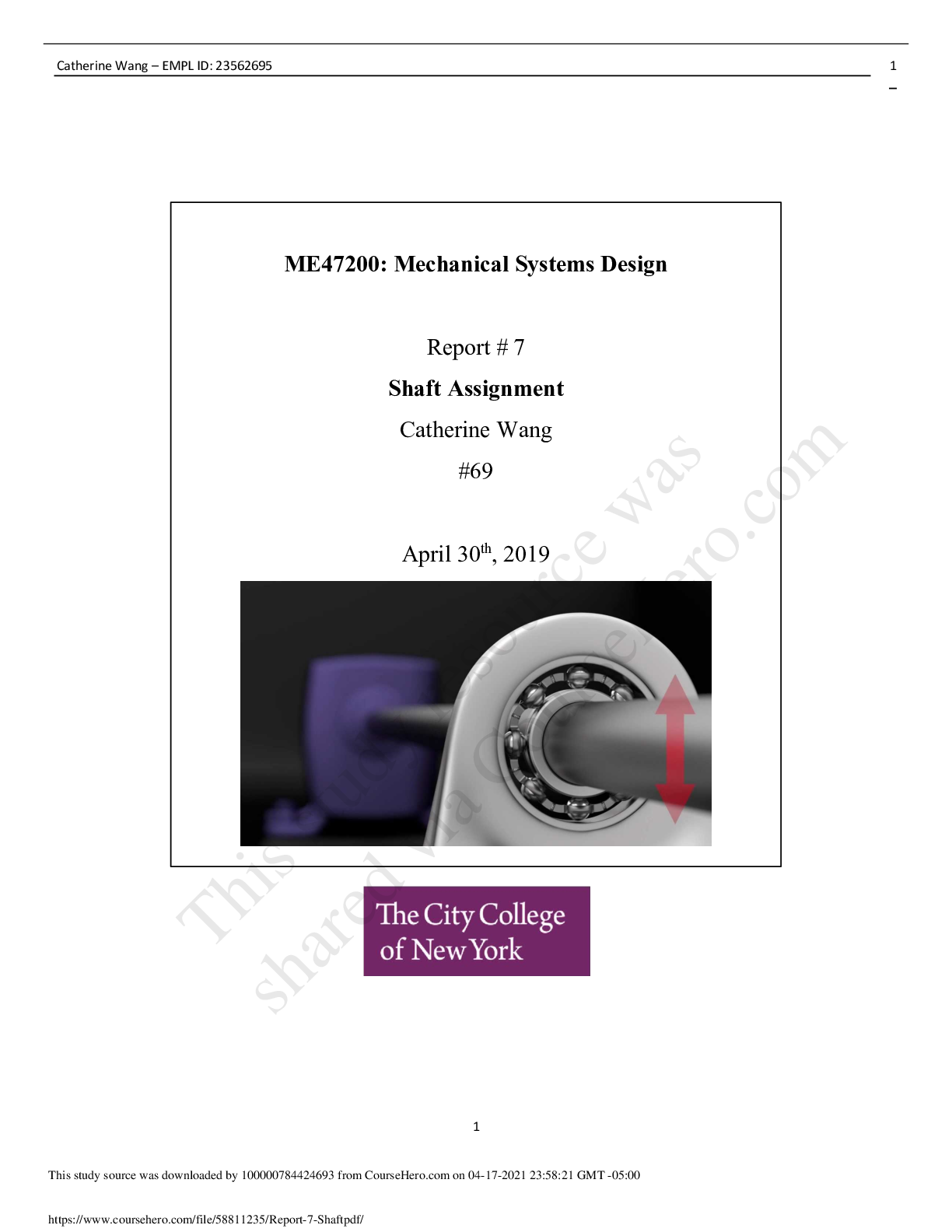
.png)
